Upstate New York Trip Part II — Women’s Rights National Historical Park
(Translated from the Chinese version with the help of ChatGPT.)
Picking up from last time: after leaving the Cornell campus, we drove north for about an hour along the west side of Cayuga Lake and arrived at Seneca Falls.
The Finger Lakes
The eleven Finger Lakes (blue markers). Nearby smaller lakes even have 'matching' nicknames — the two tiny ones in the lower right black box are sometimes called the 'fingernail lakes,' and Oneida Lake in the upper right red box is occasionally dubbed the 'thumb lake.'
From the map, you can see a series of long, narrow, north–south oriented lakes in this area — aptly named the Finger Lakes.1 Among them, Seneca Lake and Cayuga Lake are the largest. Of course, they’re still dwarfed by Lake Ontario to the north, one of the Great Lakes.
The video below explains how these lakes formed. In short, about 400 million years ago — an almost unimaginable span of time — this region was a shallow sea. The sediments that accumulated on the seabed were later compacted into shale bedrock. Compared to sandstone or limestone, shale is softer and more easily eroded by wind and glaciers. Fast forward hundreds of millions of years: during the Ice Ages (roughly 2 million to 1 million years ago), continental glaciers covered much of northern North America. Their southern edge reached what is now the Finger Lakes region, blocked by the Allegheny Plateau. As the ice advanced and retreated, it scoured and deepened the north–south river valleys. When the glaciers finally melted, the valleys filled with water — and the Finger Lakes were born.
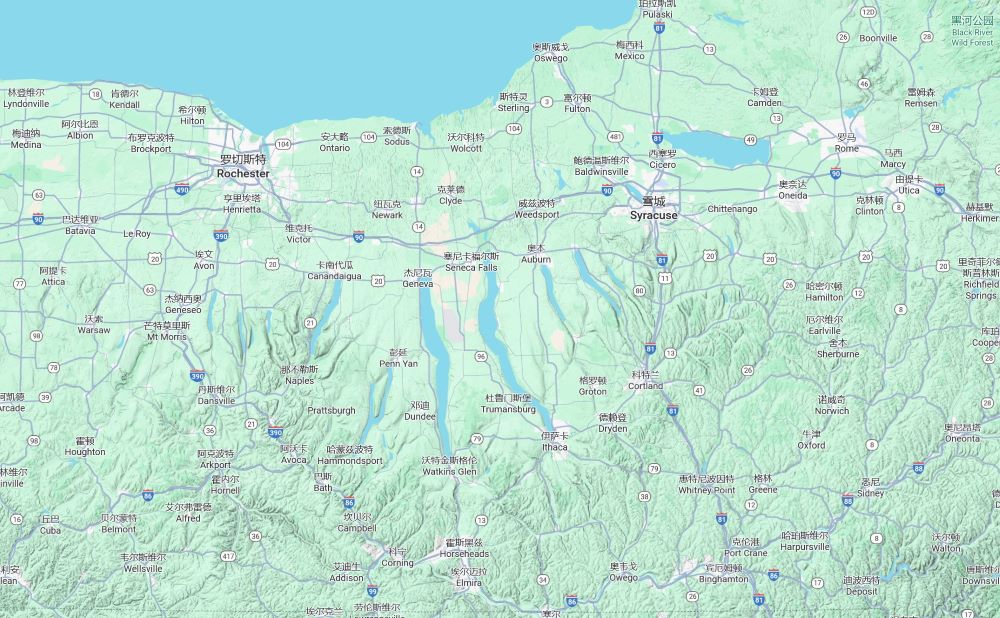
Tthe topographic map shows that the Allegheny Plateau south of the Finger Lakes presents a complex landscape of hills and valleys, while the landscape in the Finger Lakes region and to the north has been completely obliterated by the glacial sculpting.
The Seneca Falls Women’s Rights Convention
Now, back to the women’s rights convention — but first, some historical background.
Every era and every society has its own major conflicts. Between the founding of the United States in 1776 and the outbreak of the Civil War in 1861, American history was shaped by several interwoven struggles:
- Federal vs. state power: such as during the drafting of the 1787 Constitution, and later the clash between the Federalists (Hamilton, favoring a strong central government and finance) and the Democratic-Republicans (Jefferson, favoring state rights and agrarian values).
- Freedom vs. slavery: the North industrialized rapidly with canals and railroads creating a national market, while the South relied on plantation agriculture and enslaved labor.
- Westward expansion: settlers pushed westward, displacing Native peoples and clashing with European powers and Mexico. Each new state reignited debates over whether slavery would be permitted.
The women’s rights movement actually emerged out of the abolitionist movement. In 1840, at the World Anti-Slavery Convention in London, American delegates included abolitionists Henry Stanton and the Philadelphia Quaker reformer Lucretia Mott. Henry’s newlywed wife, Elizabeth Cady Stanton, also attended. Ironically, the first issue on the convention’s agenda was not slavery, but whether women could even participate — and the men voted no. Female delegates were relegated to the gallery, forbidden to speak. Lucretia and Elizabeth were indignant. “This is absurd,” they thought. “When we get home, we’ll hold a meeting about women’s rights.”
Back in the U.S., both women continued their abolitionist work, and the idea of a women’s convention lay dormant for eight years. Then in July 1848, while Lucretia was visiting Waterloo, New York, she met Elizabeth again. Fired up by conversation, they decided to act immediately — and ten days later, on July 19–20, 1848, the Seneca Falls Women’s Rights Convention was held.
Newspaper advertisement for the upcoming convention.
The Seneca Falls Convention became the first women’s rights convention in history. Of the 300 attendees, 100 (68 women and 32 men) signed the Declaration of Sentiments. Modeled after the Declaration of Independence — but replacing King George III with “man” — it declared that women were entitled to the same political, property, and educational rights as men, including the right to vote.
This convention was only the beginning. Many others followed across the country. The Seneca Falls meeting provided the women’s movement with its founding document, its strategy, and its leaders. Activists organized lectures, wrote pamphlets and petitions, and pressed state and federal legislatures for reform. Decades later, their efforts bore fruit: in 1920, the 19th Amendment to the U.S. Constitution granted women the right to vote. Tremendous progress has been made since, though the work of equality remains unfinished.2
Visiting the Women’s Rights National Historical Park
The main exhibits of the park are in the Visitor Center (virtual tour here). Next door stands the Wesleyan Chapel, where the original convention took place. The park also includes the nearby homes of several key activists (I didn’t have time to visit those).
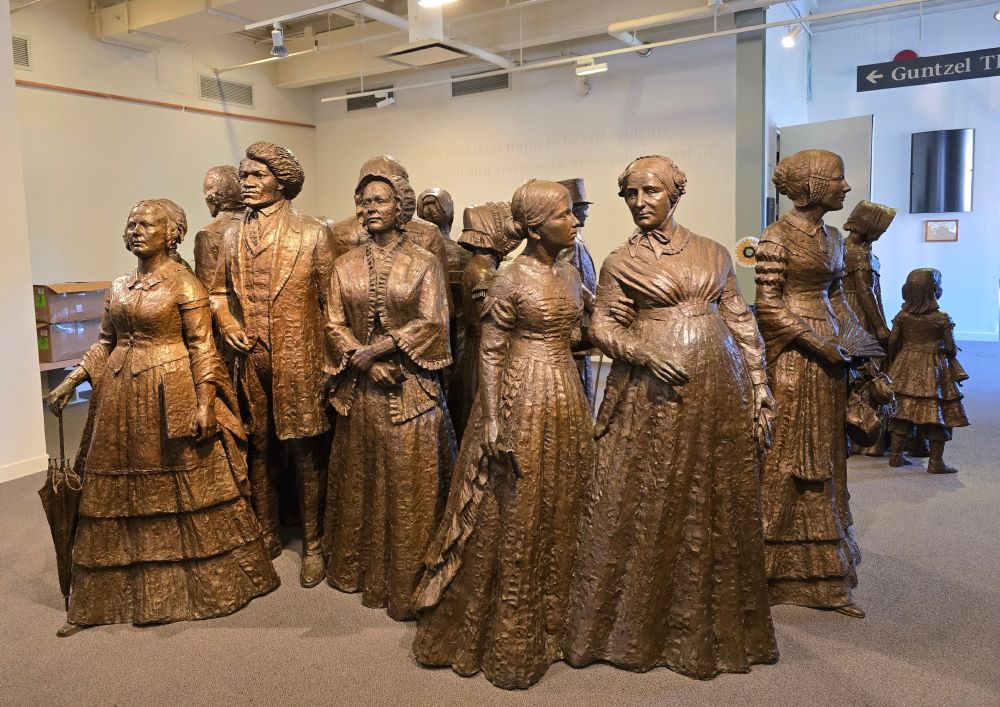
‘The First Wave’ — a sculpture in the Visitor Center lobby. The U.S. women’s movement is often divided into four ‘waves,’ and this represents the very first one.
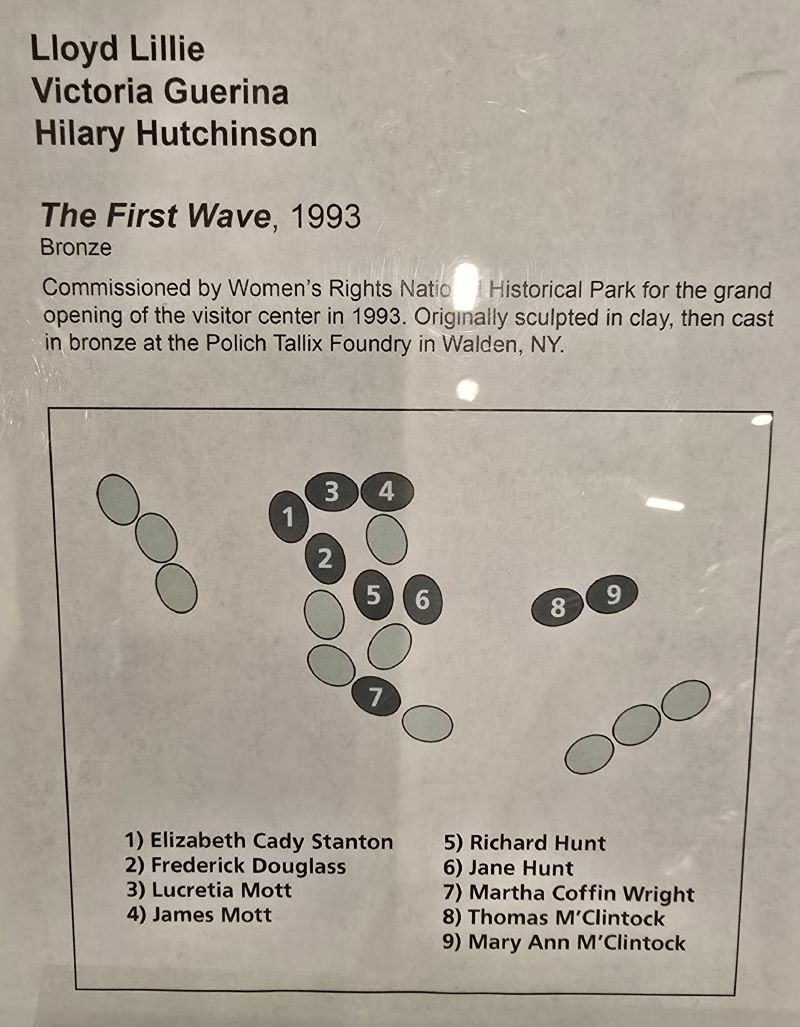
The sculpture features 20 figures — 9 historical participants and organizers, and 11 representing the anonymous citizens who attended.
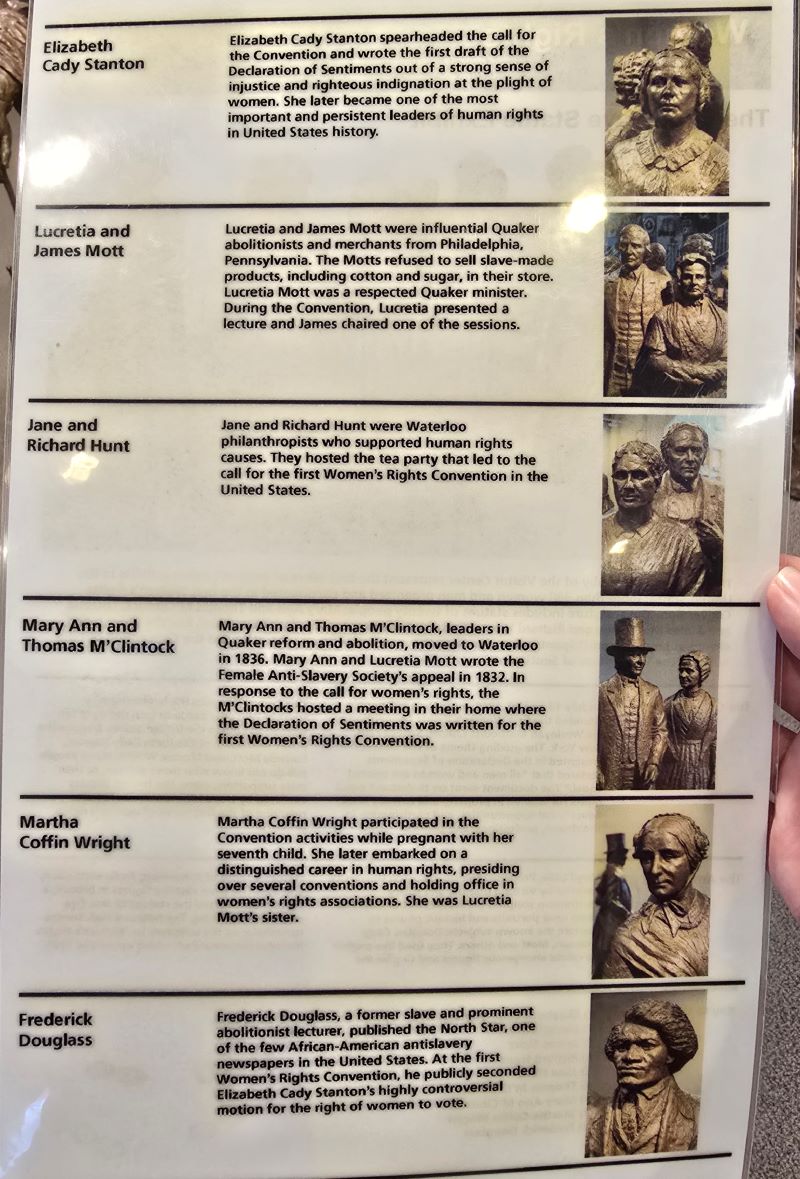
Introduction of key figures from the Seneca Falls Convention.
A short film, Dreams of Equality, plays in a small theater nearby. The 20-minute documentary tells the story of the convention, interwoven with fictional letters between a woman attendee and her brother — giving a glimpse of how ordinary people of the time might have viewed the movement. Along the theater walls are displays on later women’s conventions.
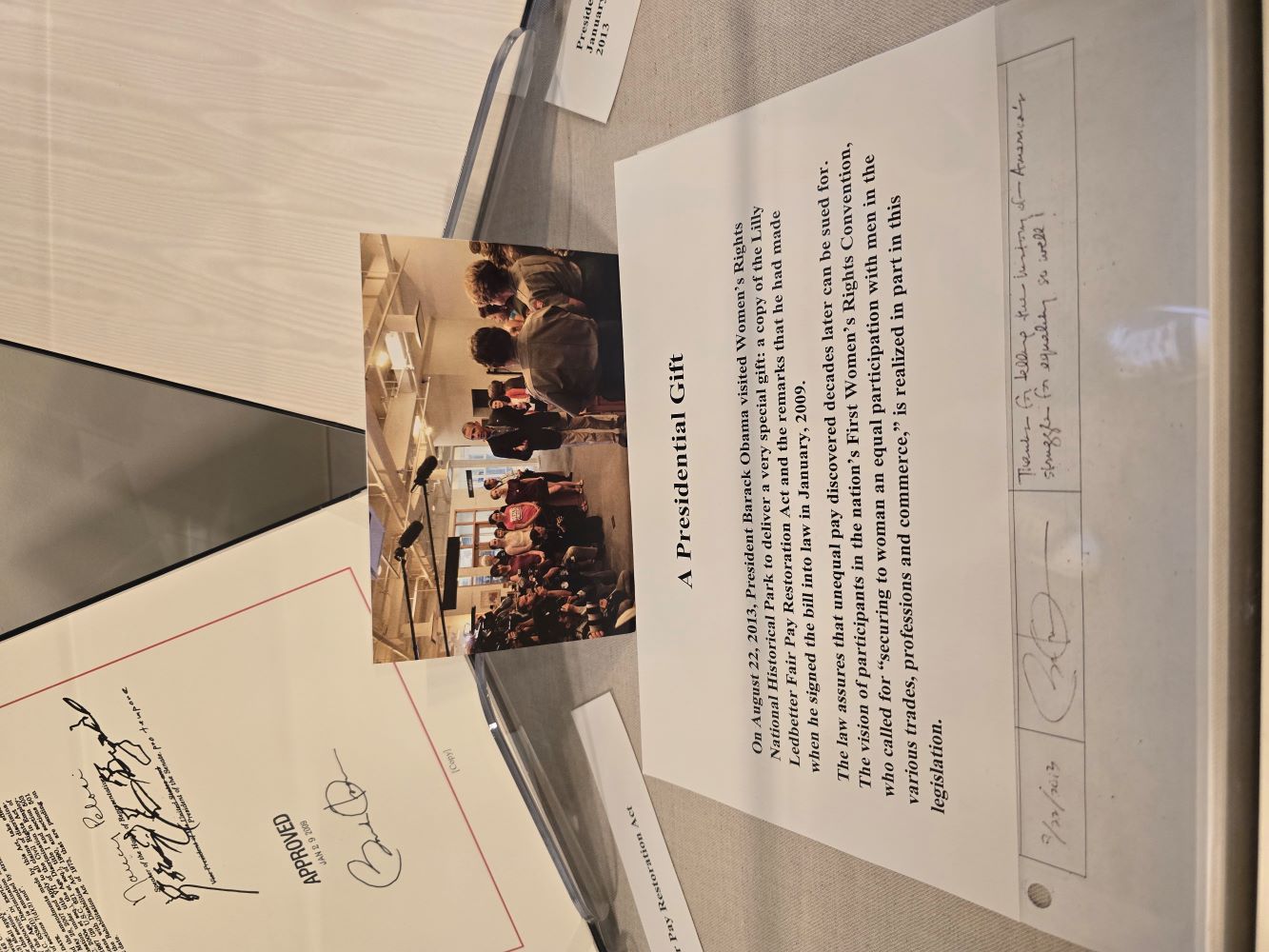
On August 22, 2013, President Obama visited the site and presented a special gift — a copy of the Lilly Ledbetter Fair Pay Restoration Act he signed in 2009, ensuring wage discrimination claims could still be filed decades later. The gesture symbolically linked the act to the spirit of the 1848 convention.
Upstairs, the exhibit traces the broader history of the women’s movement through posters and displays. Two things stood out to me:
-
In Haudenosaunee (Iroquois) society — native to the Finger Lakes region — women held social, economic, political, and religious authority equal to men. Children belonged to the mother’s clan, unlike European settlers’ patrilineal norms. In the realm of gender equality, Native Americans were far ahead of Europeans. Early feminists drew inspiration from them.
-
In 1895, Stanton published The Woman’s Bible, a bold critique of passages in the Bible relating to women. She noted that Genesis contains two creation stories: in the first, God creates man and woman simultaneously,3 while in the second, Eve is made from Adam’s rib. The first story, often overlooked,4 suggests equality — but the second has long been used to justify male dominance. Stanton’s interpretation was highly controversial: it offended the church and alienated even some of her fellow suffragists.
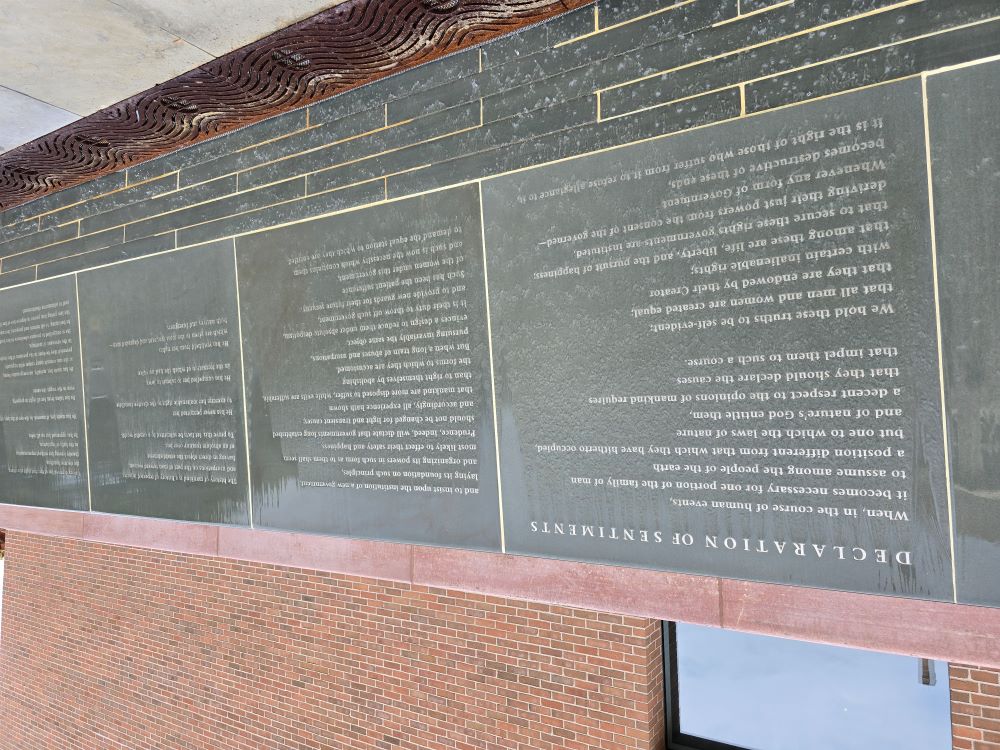
Outside the Visitor Center, a courtyard wall displays the full text of the Declaration of Sentiments.
After the visit, my overwhelming feeling was admiration. These pioneers of the women’s movement — exceptional, gifted, and determined women — refused to be content with personal freedom. They acted collectively, overcoming enormous resistance and prejudice, to speak for millions of others. Equality, they believed, should not be the exception — it should be the default.
The Erie Canal
Upstairs, a small temporary exhibit introduced the Erie Canal — another fascinating piece of New York history.
Constructed between 1817 and 1825, the 363-mile canal transformed regional trade and transportation. Shipping costs between Buffalo and Albany fell to a tenth of what they were before, accelerating westward migration and economic growth. Of course, every mile was also marked by the displacement and suffering of Native peoples.
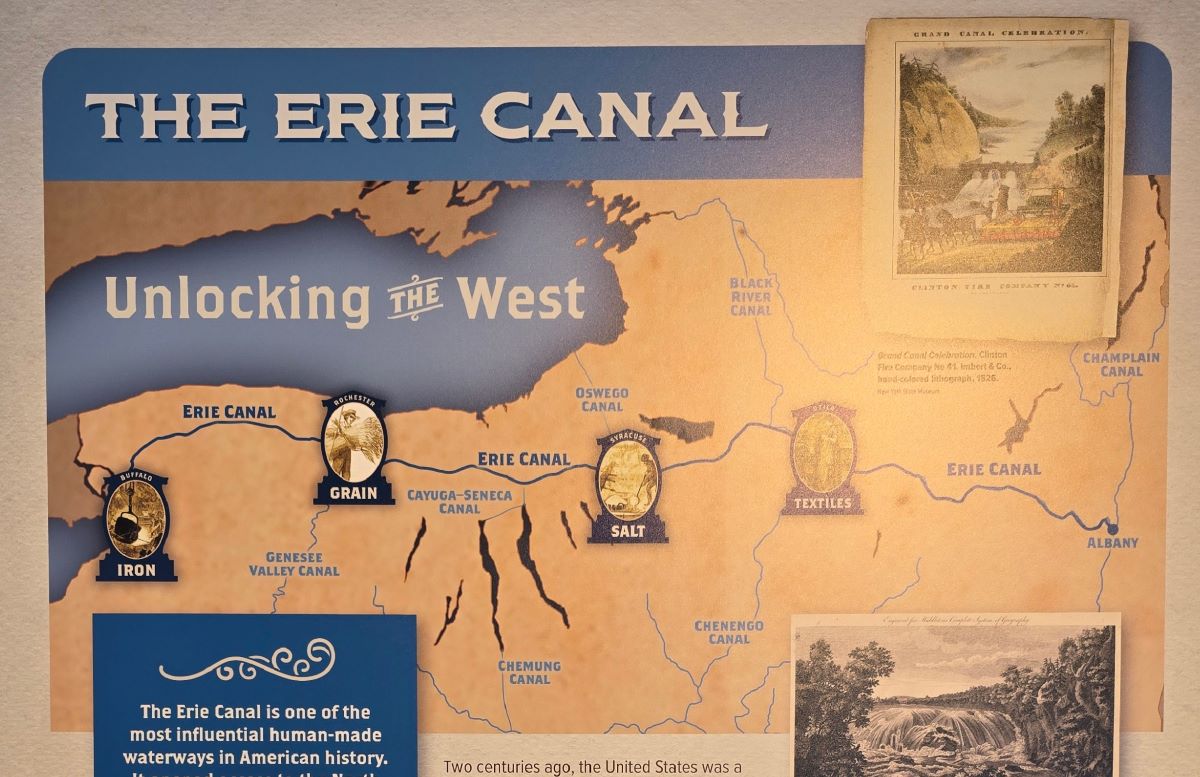
The Erie Canal connects Lake Erie (at Buffalo) with the Hudson River (at Albany). The map also shows other New York canals, including the Cayuga–Seneca Canal, which passes through Seneca Falls.
The canal’s champion was New York’s sixth governor, DeWitt Clinton. A political insider — his uncle George Clinton had been both governor and U.S. vice president — DeWitt began as his uncle’s secretary before launching his own career. He served as U.S. senator (1802–03), mayor of New York City (1803–15, intermittently), and governor (1817–23, 1825–28). He even ran for president in 1812, losing to James Madison.
The canal faced fierce political opposition and daunting natural obstacles. Critics mocked it as “Clinton’s Ditch.” When it was finally completed, Clinton staged a bit of performance art: leading a ceremonial flotilla from Buffalo to New York City, he poured a barrel of Lake Erie water into the Atlantic Ocean — a symbolic “wedding of the waters.” The celebrations along the route were enormous. On the return trip, the ship brought back a barrel of seawater to pour into Lake Erie.
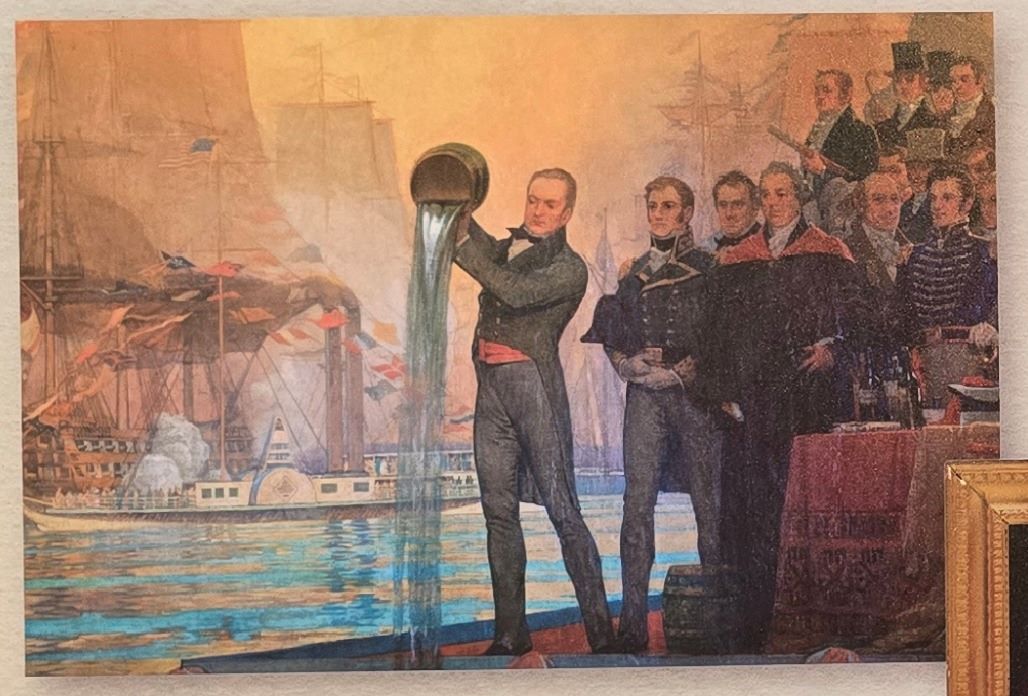
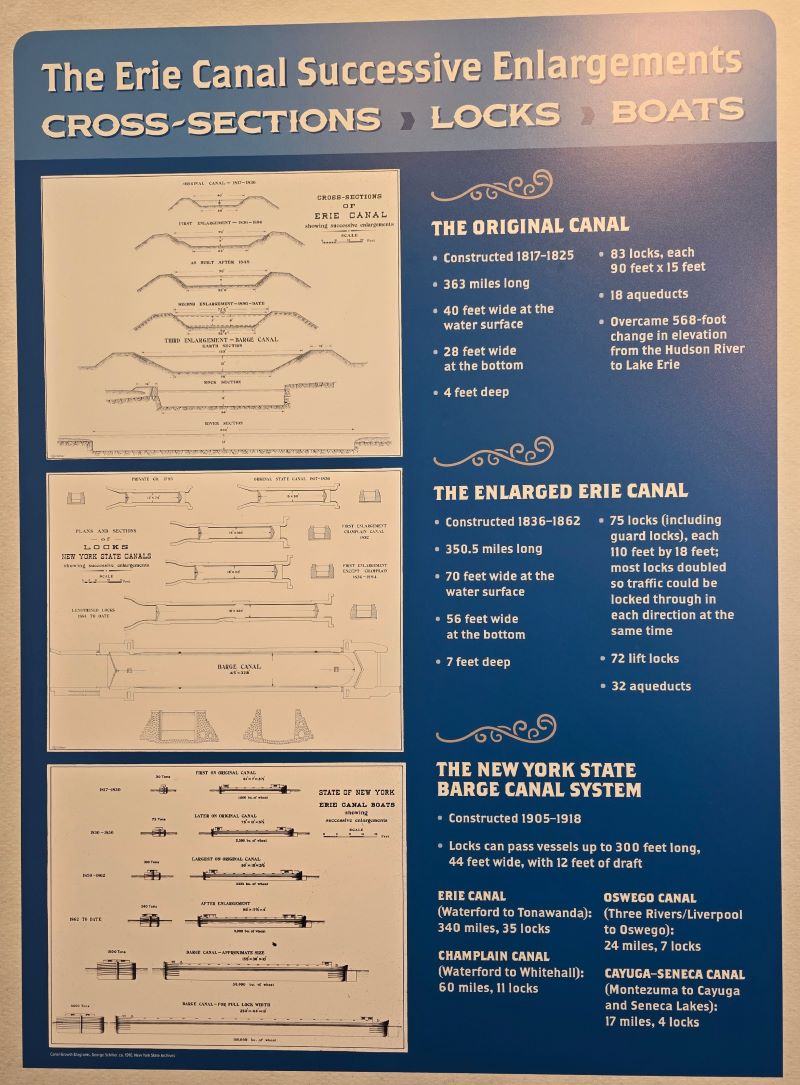
The Erie Canal was later enlarged several times, but eventually supplanted by highways, railroads, and the St. Lawrence Seaway. Today, it serves mostly for recreation.
With that, our visit ended — and we hit the road again, heading for Niagara Falls!
-
When I first heard the name “Finger Lakes,” I thought, “Wait, I don’t remember any hand-shaped lakes in New York!” Turns out, it’s just the fingers — no palm. 😅 ↩︎
-
For instance, the abortion rights established by Roe v. Wade (1973) were overturned in 2022. ↩︎
-
Genesis 1:27 — “So God created man in his own image, in the image of God created he him; male and female created he them.” ↩︎
-
It’s just one sentence — too brief to make a good story, perhaps? ↩︎